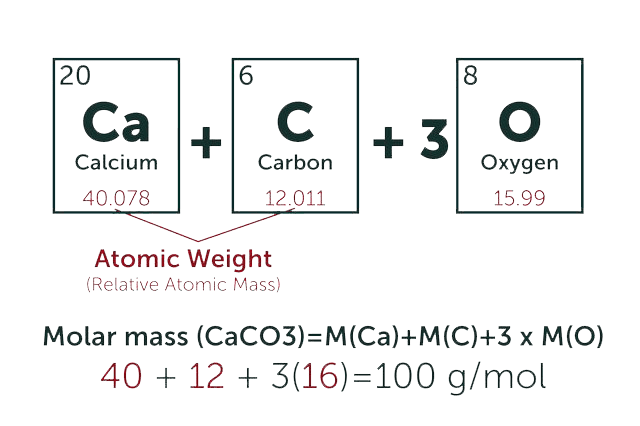Primycin
* Please be kindly noted products are not for therapeutic use. We do not sell to patients.
| Category | Antibiotics |
| Catalog number | BBF-02060 |
| CAS | 47917-41-9 |
| Molecular Weight | 1078.4 |
| Molecular Formula | C55H103N3O17 |
Online Inquiry
Description
Primycin is a macrolide antibiotic produced by Str. primycini. It is active against gram-positive bacteria, mycobacteria and protozoa.
Specification
| Synonyms | Ebrimycin; Primycin A1 |
| IUPAC Name | 2-[5-[(4E,20E)-35-butyl-19-[(2S,3S,4S,5R)-3,4-dihydroxy-5-(hydroxymethyl)oxolan-2-yl]oxy-10,12,14,16,18,22,26,30,34-nonahydroxy-3,5,21,33-tetramethyl-36-oxo-1-oxacyclohexatriaconta-4,20-dien-2-yl]-4-hydroxyhexyl]guanidine |
| Canonical SMILES | CCCCC1C(C(CCC(CCCC(CCCC(C(=CC(C(CC(CC(CC(CC(CCCCC(=CC(C(OC1=O)C(C)C(CCCN=C(N)N)O)C)C)O)O)O)O)O)OC2C(C(C(O2)CO)O)O)C)O)O)O)C)O |
| InChI | InChI=1S/C55H103N3O17/c1-7-8-19-43-49(69)33(3)22-23-38(61)17-11-16-37(60)18-12-20-44(66)34(4)26-47(73-54-51(71)50(70)48(31-59)74-54)46(68)30-42(65)29-41(64)28-40(63)27-39(62)15-10-9-14-32(2)25-35(5)52(75-53(43)72)36(6)45(67)21-13-24-58-55(56)57/h25-26,33,35-52,54,59-71H,7-24,27-31H2,1-6H3,(H4,56,57,58)/b32-25+,34-26+/t33?,35?,36?,37?,38?,39?,40?,41?,42?,43?,44?,45?,46?,47?,48-,49?,50-,51+,52?,54+/m1/s1 |
| InChI Key | NYWSLZMTZNODJM-MCGDBQAWSA-N |
Properties
| Appearance | White Crystal |
| Antibiotic Activity Spectrum | Gram-positive bacteria; mycobacteria; parasites |
| Boiling Point | 1176.5°C at 760 mmHg |
| Melting Point | 166-168°C (dec.) |
| Density | 1.29 g/cm3 |
Reference Reading
1. Structural and functional comparison of Saccharomonospora azurea strains in terms of primycin producing ability
Márk Kovács, Dénes Seffer, Ágota Pénzes-Hűvös, Ákos Juhász, Ildikó Kerepesi, Kitti Csepregi, Andrea Kovács-Valasek, Csaba Fekete World J Microbiol Biotechnol. 2020 Sep 29;36(11):160. doi: 10.1007/s11274-020-02935-x.
Emerging and re-emerging microbial pathogens, together with their rapid evolution and adaptation against antibiotics, highlight the importance not only of screening for new antimicrobial agents, but also for deepening knowledge about existing antibiotics. Primycin is a large 36-membered non-polyene macrolide lactone exclusively produced by Saccharomonospora azurea. This study provides information about strain dependent primycin production ability in conjunction with the structural, functional and comparative genomic examinations. Comparison of high- and low-primycin producer strains, transcriptomic analysis identified a total of 686 differentially expressed genes (DEGs), classified into diverse Cluster of Orthologous Groups. Among them, genes related to fatty acid synthesis, self-resistance, regulation of secondary metabolism and agmatinase encoding gene responsible for catalyze conversion between guanidino/amino forms of primycin were discussed. Based on in silico data mining methods, we were able to identify DEGs whose altered expression provide a good starting point for the optimization of fermentation processes, in order to perform targeted strain improvement and rational drug design.
2. Effect of primycin on growth-arrested cultures and cell integrity of Staphylococcus aureus
Péter Feiszt, György Schneider, Levente Emődy Acta Microbiol Immunol Hung. 2017 Jun 1;64(2):121-130. doi: 10.1556/030.64.2017.002. Epub 2017 Mar 6.
Bactericidal effect against non-dividing bacteria is a very advantageous, but rare characteristic among antimicrobial agents, mostly possessed by those affecting the cell membrane. These kinds of agents can kill bacterial cells without lysis. We assessed these characteristics on primycin, a topical anti-staphylococcal agent highly effective against prevalent multiresistant strains, as it also acts on the cell membrane. In time-kill studies, primycin preserved its bactericidal activity against growth-arrested Staphylococcus aureus cultures. The bactericidal action was slower against growth-arrested cultures compared to the exponentially growing ones to different extents depending on the manner of arrest. The bactericidal effect was less influenced by stringent response and by protein synthesis inhibition, proving that it does not depend on metabolic activity. In contrast, uncoupling of the membrane potential predominantly slowed, and low temperature almost stopped killing of bacteria. In consideration of published data, these facts suggest that the antibacterial action of primycin involves disrupting of the membrane potential, and is predominantly influenced by the membrane fluidity. Optical density measurements and transmission electron microscopy verified that primycin kills bacterial cells without lysis. These results reveal favorable characteristics of primycin and point to, and broaden the knowledge on its membrane-targeted effect.
3. Toxicology studies of primycin-sulphate using a three-dimensional (3D) in vitro human liver aggregate model
Ágota Pénzes, Elhusseiny Mohamed Mahmud Abdelwahab, Judit Rapp, Zsanett A Péteri, Judit Bovári-Biri, Csaba Fekete, György Miskei, Krisztián Kvell, Judit E Pongrácz Toxicol Lett. 2017 Nov 5;281:44-52. doi: 10.1016/j.toxlet.2017.09.005. Epub 2017 Sep 13.
Primycin-sulphate is a highly effective compound against Gram (G) positive bacteria. It has a potentially synergistic effect with vancomycin and statins which makes primycin-sulphate a potentially very effective preparation. Primycin-sulphate is currently used exclusively in topical preparations. In vitro animal hepatocyte and neuromuscular junction studies (in mice, rats, snakes, frogs) as well as in in vitro human red blood cell experiments were used to test toxicity. During these studies, the use of primycin-sulphate resulted in reduced cellular membrane integrity and modified ion channel activity. Additionally, parenteral administration of primycin-sulphate to mice, dogs, cats, rabbits and guinea pigs indicated high level of acute toxicity. The objective of this study was to reveal the cytotoxic and gene expression modifying effects of primycin-sulphate in a human system using an in vitro, three dimensional (3D) human hepatic model system. Within the 3D model, primycin-sulphate presented no acute cytotoxicity at concentrations 1μg/ml and below. However, even at low concentrations, primycin-sulphate affected gene expressions by up-regulating inflammatory cytokines (e.g., IL6), chemokines (e.g., CXCL5) and by down-regulating molecules of the lipid metabolism (e.g., peroxisome proliferator receptor (PPAR) alpha, gamma, etc). Down-regulation of PPAR alpha cannot just disrupt lipid production but can also affect cytochrome P450 metabolic enzyme (CYP) 3A4 expression, highlighting the need for extensive drug-drug interaction (DDI) studies before human oral or parenteral preparations can be developed.
Recommended Products
| BBF-04736 | 3-Indolepropionic acid | Inquiry |
| BBF-05886 | Notoginsenoside R1 | Inquiry |
| BBF-04621 | Artemisinin | Inquiry |
| BBF-03880 | Cyclopamine | Inquiry |
| BBF-03904 | Nosiheptide | Inquiry |
| BBF-01732 | Mevastatin | Inquiry |
Bio Calculators
* Our calculator is based on the following equation:
Concentration (start) x Volume (start) = Concentration (final) x Volume (final)
It is commonly abbreviated as: C1V1 = C2V2
* Total Molecular Weight:
g/mol
Tip: Chemical formula is case sensitive. C22H30N4O √ c22h30n40 ╳


